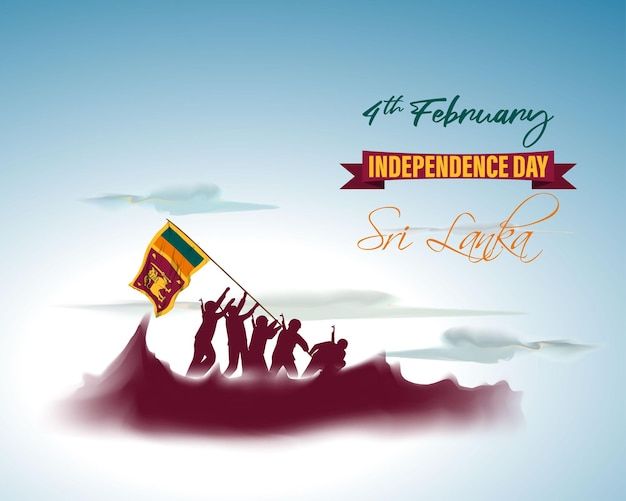National Day of Sri Lanka 2025: Celebrating the Nation’s Heritage and Independence
National Day of Sri Lanka 2025: National Day in Sri Lanka, observed every year on February 4th, is a significant event in the country’s history. It marks Sri Lanka’s independence from British rule, which was granted on this day in 1948. National Day not only serves as a celebration of Sri Lanka’s sovereignty but also acts as a reminder of the struggles and sacrifices made by the nation’s freedom fighters. The day holds deep significance for the people of Sri Lanka, and it is celebrated with great pride and reverence.
In this article, we will explore the history, significance, observance, and cultural impacts of the National Day of Sri Lanka, shedding light on its role in shaping the country’s identity and unity.
History of National Day of Sri Lanka
Sri Lanka, formerly known as Ceylon, was under British colonial rule for over 140 years, from 1815 until 1948. The country’s independence was achieved through a peaceful political movement led by prominent leaders such as D. S. Senanayake, who later became the first Prime Minister of Sri Lanka. After a series of negotiations and discussions, Sri Lanka was granted independence on February 4, 1948, marking the end of British colonial rule.
The day of independence became a symbol of national pride and liberation. It was the beginning of a new era for Sri Lanka as a self-governing nation, free from colonial control. National Day is now observed annually to commemorate this historic achievement and to reflect on the journey the nation has taken since its independence.
The Significance of National Day
National Day holds immense significance for the people of Sri Lanka in various ways:
- Commemoration of Freedom: National Day is a day of reflection, where Sri Lankans remember the sacrifices made by their ancestors and leaders to secure their freedom. It is a celebration of the country’s independence and the nation’s ability to govern itself without foreign intervention.
- National Unity: Despite the challenges faced by Sri Lanka in its post-independence history, including civil conflict and political instability, National Day serves as a unifying force. The observance of the day reminds citizens of their shared identity and collective aspirations for peace, prosperity, and progress.
- Cultural Pride: The day is a celebration of Sri Lanka’s rich cultural heritage, which spans thousands of years. From its ancient temples and landmarks to its vibrant traditions, National Day highlights the nation’s historical and cultural importance in the region.
- Recognition of National Heroes: National Day is an opportunity to honor the leaders and freedom fighters who played a key role in the country’s independence movement. Figures such as D. S. Senanayake, S. W. R. D. Bandaranaike, and other prominent leaders are remembered for their contributions to the nation’s freedom.
- Encouragement of Patriotism: National Day fosters a sense of patriotism among the citizens of Sri Lanka. It is a day when people come together to celebrate their country’s achievements, reflect on their shared past, and look forward to a future built on unity and progress.
How is National Day Observed in Sri Lanka?
National Day is observed with grand ceremonies, parades, and cultural displays throughout Sri Lanka. The observance begins with a flag-raising ceremony at Independence Square in Colombo, where the country’s national flag is hoisted, and a guard of honor is given to the national leaders. This ceremony is attended by government officials, dignitaries, and the general public, and it marks the start of the celebrations.
- Flag Hoisting and Parades: The flag hoisting ceremony at Independence Square is followed by a national parade, which includes military displays, performances by schoolchildren, and cultural exhibitions. These parades serve as a testament to the strength and unity of the nation.
- Cultural Programs: Various cultural events and performances are held throughout Sri Lanka on National Day, showcasing the country’s rich traditions. Traditional dances, music, and art forms are performed in cities and towns across the island, reflecting the diverse cultural heritage of Sri Lanka.
- Religious Observances: As a multi-religious country, Sri Lanka observes National Day with religious ceremonies, where Buddhists, Hindus, Muslims, and Christians come together to pray for the well-being of the nation. Temples, mosques, churches, and kovils hold special prayers, and people gather to offer their respects.
- Government Celebrations: The President and Prime Minister of Sri Lanka address the nation on National Day, highlighting the country’s achievements and challenges. These addresses serve to inspire the citizens and reaffirm the government’s commitment to the nation’s growth and development.
- Community Activities: Local communities also participate in National Day celebrations by organizing sporting events, exhibitions, and social gatherings. These events foster a sense of community spirit and encourage people to come together in celebration.
Key Facts About National Day of Sri Lanka
- The Day Marks Sri Lanka’s Independence from British Rule: Sri Lanka gained independence on February 4, 1948, after over a century of British colonization. The day marks the end of British colonial rule and the beginning of Sri Lanka’s journey as a sovereign nation.
- The First Prime Minister of Sri Lanka: D. S. Senanayake became the first Prime Minister of Sri Lanka after the country gained independence in 1948. He is considered one of the key figures in the independence movement and is often regarded as the “Father of the Nation.”
- Flag Hoisting Ceremony at Independence Square: The most important National Day event is the flag hoisting ceremony held at Independence Square in Colombo. This ceremony is attended by the country’s top political leaders and is a symbol of national pride.
- Symbol of National Unity: National Day serves as a reminder that, despite Sri Lanka’s complex history, the citizens of the country must work together to overcome challenges and build a prosperous future.
- Sri Lanka’s Rich Cultural Heritage: National Day is an occasion to celebrate the country’s diverse cultures, traditions, and history. Sri Lanka’s cultural heritage is rich and varied, with influences from Buddhism, Hinduism, Islam, and Christianity.
FAQs About National Day of Sri Lanka
- Why is National Day celebrated on February 4th?
- February 4th marks the day in 1948 when Sri Lanka gained independence from British colonial rule. It is celebrated annually to honor this historic event.
- Who was the first Prime Minister of Sri Lanka?
- D. S. Senanayake was the first Prime Minister of Sri Lanka and played a vital role in leading the country to independence.
- What happens during the National Day celebrations?
- The celebrations include flag hoisting, military parades, cultural performances, religious ceremonies, and speeches by government officials.
- Is National Day celebrated only in Colombo?
- No, National Day is celebrated throughout Sri Lanka, with cultural events, parades, and religious observances taking place in various regions of the country.
- How does National Day promote unity?
- National Day promotes unity by reminding citizens of their shared history and the importance of working together for the nation’s progress. It is a day to celebrate Sri Lanka’s diversity and strengthen national pride.
Conclusion
National Day of Sri Lanka is a day of immense importance for the people of the island nation. It is a celebration of the country’s hard-earned independence, its rich cultural heritage, and the enduring spirit of its people. The observance of National Day fosters unity, patriotism, and a sense of national pride, while also encouraging citizens to reflect on the progress Sri Lanka has made and the challenges that lie ahead. As the nation celebrates its freedom each year, it is a reminder of the importance of safeguarding the values of independence, peace, and prosperity for future generations.










